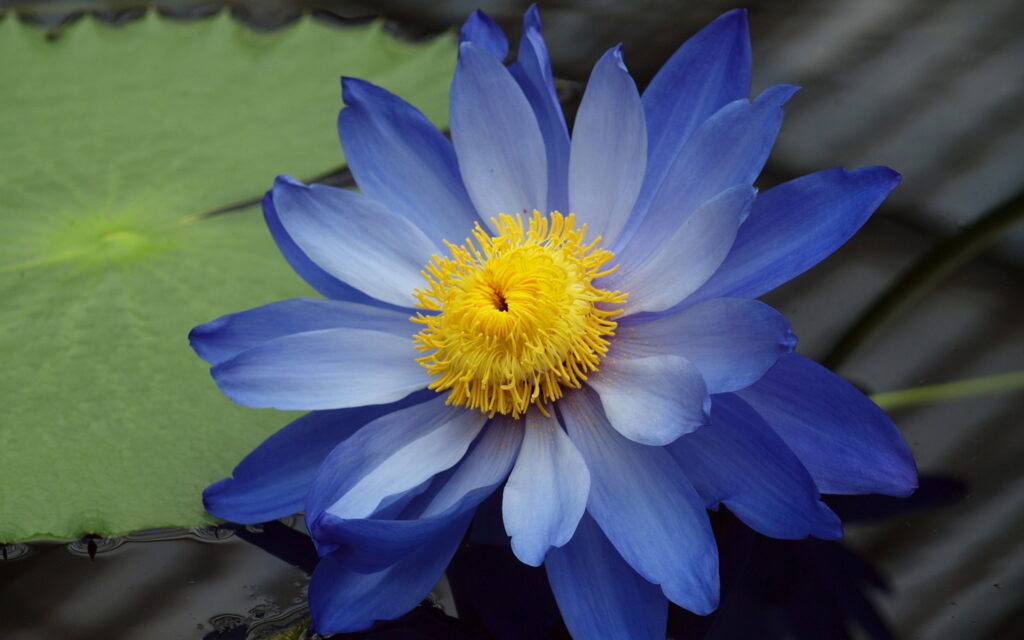The blue lotus, or Nymphaea caerulea, has enchanted many for centuries. Its radiant blue petals and intoxicating scent stand out in any aquatic setting. But this flower offers more than beauty; it carries a rich history, symbolism, and gardening potential.
Historical Significance
In Ancient Egypt, people revered the blue lotus as a symbol of purity and rebirth. Its daily cycle of closing at night and reopening with the sunrise mirrored the sun’s journey, linking it to the sun god, Ra. This aquatic flower adorned the tombs of pharaohs, appeared in wreaths worn by priests, and even found its way into various medicinal and recreational concoctions.
The blue lotus also holds significance in other ancient civilizations. It symbolizes enlightenment in Buddhism and represents beauty and purity in Hinduism.
Growing the Blue Lotus
Starting a blue lotus garden from seeds can challenge and reward gardeners. These seeds need specific conditions to germinate, but once they sprout, they grow rapidly. Here’s a step-by-step guide:
- Preparation: First, scarify the seeds. This process involves making a small nick on the seed using a file or a nail clipper, which helps water penetrate the seed and initiate germination.
- Planting: Next, place the scarified seeds in warm water. They should start sprouting within a few days. Once the sprout reaches about 4 inches, plant it in soil.
- Care: The blue lotus loves still water and plenty of sunlight. Make sure the water isn’t too deep initially. As the plant grows, you can increase the water depth.
If you’re starting your gardening journey, the blue lotus makes a mesmerizing addition. Dive deeper into the world of flowers with our guide on How to Start a Flower Garden: Blooms of Beauty Await.
Incorporating Nymphaea Caerulea in Garden Design
The blue lotus can star in various garden designs. Its vibrant hue and unique growth pattern make it a favorite among gardeners.
- Wildflower Meadow: Imagine a vast expanse of green punctuated by the vivid blues of the lotus. The blue lotus can add serenity to a wildflower meadow, especially near a water feature. Learn more about this design in Transforming a Lawn into a Wildflower Meadow: Embrace Nature’s Beauty.
- Cottage Garden: The rustic charm of a cottage garden can benefit from an aquatic feature adorned with blue lotuses. For more on this, explore our Cottage Garden Design Tips.
- Vegetable and Flower Blend: Combining the utility of vegetables with the beauty of flowers like the blue lotus can result in a functional and aesthetically pleasing garden. Dive into this concept with our article on Designing a Flower and Vegetable Garden: Where Beauty Meets Functionality.
Cultural and Medicinal Uses
Various cultures have used the blue lotus not just as a symbol but also for its medicinal properties. Traditional medicine attributes sedative and aphrodisiac properties to it. People have used its petals, stamens, and bulbs to make tea, wine, and other concoctions believed to induce a state of relaxed, dreamy awareness.
Conclusion
The Nymphaea caerulea, with its rich history and undeniable beauty, showcases nature’s wonders. Whether you’re a history buff, a gardening enthusiast, or someone seeking tranquility, the blue lotus has something to offer. As you embark on your gardening journey, let the blue lotus inspire you to create spaces that resonate with beauty, history, and serenity.

